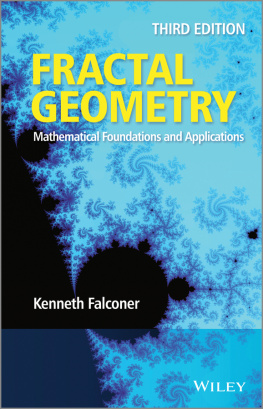I would like to thank Martha MacCullough, who introduced me to a model for meaningful integration across all content areas, Debbie MacCullough, who helped me to fully apply that model to the field of mathematics, Timothy Yoder, who compelled me to write this book, Brenda Mellon Ebersole, who provided a detailed critique of my writing, two decades of students, who refined my practice of simplifying complex ideas, and my wife and children, who sacrificed many family hours during the writing process. Soli Deo Gloria.
To the Student
Each chapter is divided into four major sections. First, it is important that you take time to think about and complete each Warm-up Activity . Each activity is designed to help to start you down the path of thinking about relevant information or skills. Skipping these activities will make it more difficult for you to understand the content.
In the second and more robust Concept Development section, you will experience a topic in-depth. This includes making connections within mathematics as well as links to other subjects. Read this section slowly and carefully . One challenge most people face when reading mathematics is that they expect to be able to read mathematics the way they read a novel. Mathematics is different. You need to frequently pause to reflect on what you do and do not understand. You may ask, Can I give an example and non-example of that idea?, Do I need to reread that section?, or Could I explain that to someone else? It is important to reflect as you read.
The third section, Something to Think About, provides you with compelling questions that relate the mathematics you just learned to enduring questions. These questions may not be easy to answer; they are worthy of reflection and dialogue. You will continue to think about these types of questions long after finishing this book.
Each chapter ends with Covering the Reading questions and Problems. The Covering the Reading questions are designed to help you process what you have read. If you are unable to answer these questions, you should probably do some rereading. The expectations on the Problems are completely different. In mathematics, the difference between an exercise and a problem is that an exercise is something you already know how to do but should practice to gain mastery. A problem is something that you may not know how to do. In this section you will need to problem-solve. You may need to research. You may need to spend extra time reflecting. You may have to leave the problems and come back to the problems when your mind is refreshed. Taking time to reflect and do problems is usually necessary to fully understand what you have read.
To the Instructor
Unlike many mathematics books that serve as a reference, this book is meant to be read by the student. However, the methods for using this book heavily depend on your students reading comprehension skills, independent thinking skills, and study habits. I recommend three potential approaches.
Method 1: High-level student responsibility. The students read the text before class and complete the Covering the Reading questions. Class time is used to work with the teacher and small groups on questions about the subject and a review of the Covering the Reading questions. This may require a short lecture by the teacher related to a certain portion of the material. In addition, the teacher can reflect on her experiences with the topic. Students then do the Problems for homework and bring their work to the following class. Time is then spent discussing the problems as a class. This approach requires that the students be conscientious and that the teacher be flexible with the topics at hand.
Method 2: Mixed responsibility. The students read the text before class and complete the Covering the Reading questions. At the start of class, the teacher re-presents the material in his own way and incorporates the Covering the Reading into the interactive lesson. The teacher can then either assign the Problems for homework or pursue them as a class at the next meeting. This approach allows the teacher to present material in a different way than the book, one that may be more appropriate for a specific group of students. Essentially, the students would get the information in two different ways from two different people.
Method 3: High-level teacher responsibility. The teacher thoroughly presents the material in class. Students use the book as a resource while completing the Covering the Reading for homework or during the next class. Problems are handled the same way. This approach gives the teacher more control of the direction and pace of the course.
Each of these methods has its strengths and weaknesses. The way you use this book should be a function of who you and your students are. You may envision another way to use this book that is better than these three methods. Have fun teaching. I also hope that I have raised some questions you have never considered.
Chapter 0 Biblically Informed Mathematics
Humanity has forever pursued the enduring questions. They have also been called worldview issues and essential questions. The heart of this preoccupation is that humanity has been wrestling with the questions of existence, truth, purpose, beauty, and ethics from the dawn of time. Who am I? How did we get here? Is there a God? What is really real? How do we know if something is true? What is truth? Is there a basis for good and evil? What is beauty? Who determines what is true, good, and beautiful?










